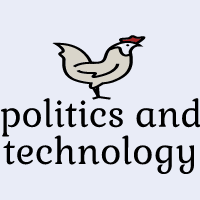Trade originated from prehistoric human contact. Trade was the first facility of prehistoric peoples, and the United Nations agency modified the products and services of each other throughout the current economy before inventing a modern currency. Peter Watson chronicles the history of long-distance trade from years ago.
In the Mediterranean, the first intercultural contact involving members of the homeopathic species, especially the exploitation of the Danube, was at a time starting from 5,000 to 30,000 BC.
Some trace the origins of the trade to the beginning of prehistoric transactions. Except for ancient independence, trade became a major facility for prehistoric peoples, and the UN agency bartered what they had for products and services from each other.
Ancient History
It is believed that trade was carried out throughout recorded human history. There is evidence of the exchange of volcanic rocks and flint throughout this period. It is believed that reciprocal volcanic rocks have occurred in Papua since seventeen thousand BC.
Robert Carr Bossanke investigated the exchange of period by excavations in 1901. It is believed that trade first began in Southwest Asia.
Archaeological evidence of the use of volcanic rocks provides data but this material has been more and more different from the preferred silicon oxide from the late Middle Stone Age to the Neolithic, requiring exchange as sediment of rare volcanic rocks between the Mediterranean region.
It is believed that the subj possesses the materials necessary for making utensils or cutting tools, although since the materials available were completely different in the market, the use was found exclusively for the higher position of exploiting the tribe "flint of the created man". Volcanic rocks have a management of their value relative to flint.
Early traders listed volcanic rocks at distances of 900 kilometers within the Mediterranean region.
Trade in the Mediterranean throughout the Neolithic period in Europe was the largest during these materials. The networks lived in about twelve thousand BC peninsula and the rule was primarily for trade with the Levant, the Islamic Republic of Iran, and Egypt in keeping with the Zarins study of 1990. The sources of Milos and Libari were created among the first large-scale trade between the Mediterranean region as recognized in the social sciences.
The Sari I Sang mine among the mountains of the Asian country was the most important provider of the gemstone trade. Most materials for the first half were included throughout the amount of cassette from the region beginning in 1595 BC.
Trading later
The Mediterranean Sea and the Middle East
Ebla was a privileged trading center throughout the third millennium BC, with a network reaching the peninsula and the northern region.
Materials used to make jewelry
Civilization Until the fall of the Roman Empire in the fifth century, a financially rewarding trade brought valuable spices to Europe from the region, along with the Republic of India and China. Roman trade allowed its empire to flourish and continue. The Last Republic and the Peace of the Roman Empire together created a stable and secure transport network that enabled everyone to be loaded without worrying about great piracy, as Rome became the only effective naval power between the Mediterranean Sea with the conquest of Egypt and the Middle East together.
In the ancient Balkans, Hermes was the god of trade, weights, and scales. In ancient Rome, Mercurius was the god of merchants, whose contest was celebrated by merchants on the twenty-fifth day of the fifth month. The concept of commerce was a colleague in nursing the antithesis of necessity and the economic direction of trade was also in the old days of the state of Yemen. They traded goods in all Arab countries. The state of Yemen was an exporter of coffee and spices. All materials and trade were for the Arabs the main source of income for the state in the Middle East. Waxing World Trade is a great encyclopedia in Western countries such as Germany, Australia, Turkey, America, Holland, and all Western countries. It also has a major source and a major factor in the income of these Western countries. Germany has become more than fifty billion dollars in annual income. In cars yes Trade is becoming very global


تعليقات
إرسال تعليق